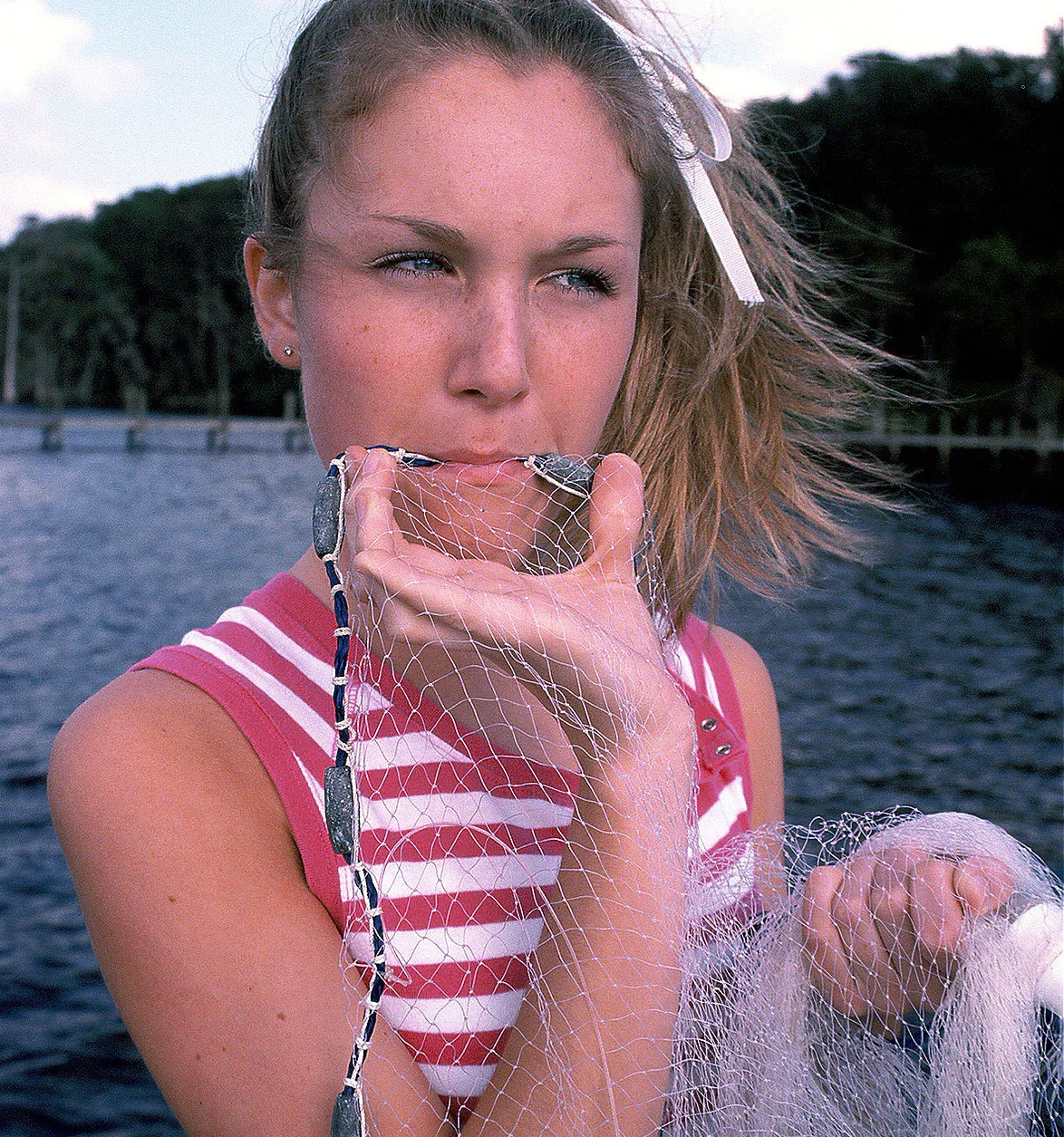Learn to throw a cast net effortlessly with the “Calusa Dry Load” method, developed by Roy McDermott and Buster McKenzie of Calusa Cast Nets. Mastering this technique is so straightforward that children as young as six have achieved immediate success with a four-foot net. Follow these steps for a seamless right-handed throw:
- Prepare the Throw Line: Create a slip knot at the end of the net’s throw line, forming a loop. Slip it over your left wrist and tighten.
- Coil the Throw Line: Generate loose coils from the slip knot towards the net, gripping them with your left hand.
- Secure the Net: Hold the top of the cast net just below its large horn, ensuring the lead line weights touch the ground.
- Gather the Net: Hold the net by the horn, gather it in your right hand just below your waist, and place the gathered net in your left hand holding the throw line coils.
- Start Gathering: Reach toward the net’s lead line with your right hand, slowly gathering the net while checking for tangles and debris.
- Gather Half the Net: Accumulate about half of the net mesh in your right hand.
- Roll Over Left Thumb: Roll the portion of the mesh over your left thumb and the net horn, temporarily resting it there.
- Two Halves of Net: At this point, there are two halves of the net – a high half and a low half.
- Grab the Lead Line: At the transition from high to low, grab the lead line with your right hand, place it in your lips (not teeth), and hold firmly.

- Secure the Lead Line: Using the small finger of your right hand, secure the lead line.
- Final Adjustment: While still holding the lead line, reach up with your right hand and grab the portion of the net resting on the thumb and horn.
- Ready to Throw: Make a left-to-right twisting motion, similar to throwing a frisbee, preparing for the throw.
- Throwing Motion: Execute the throw with a 45-degree up-and-out spin. Speed and strength play a role, but careful timing and adherence to these steps are crucial for successful cast netting.

Mastering this straightforward technique opens up a world of possibilities for anglers seeking fresh, native bait from various waterways, providing a cost-effective and rewarding approach to fishing. Always be aware of state and local regulations governing cast net use and the lawful species to catch and keep.
Images/Source: OutdoorLife





